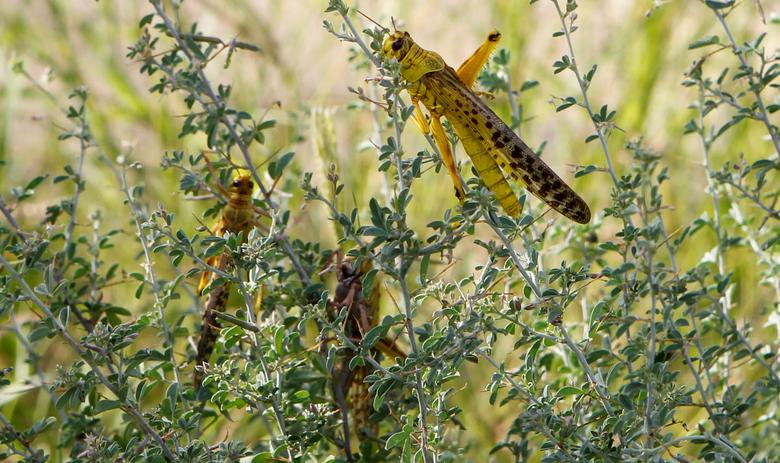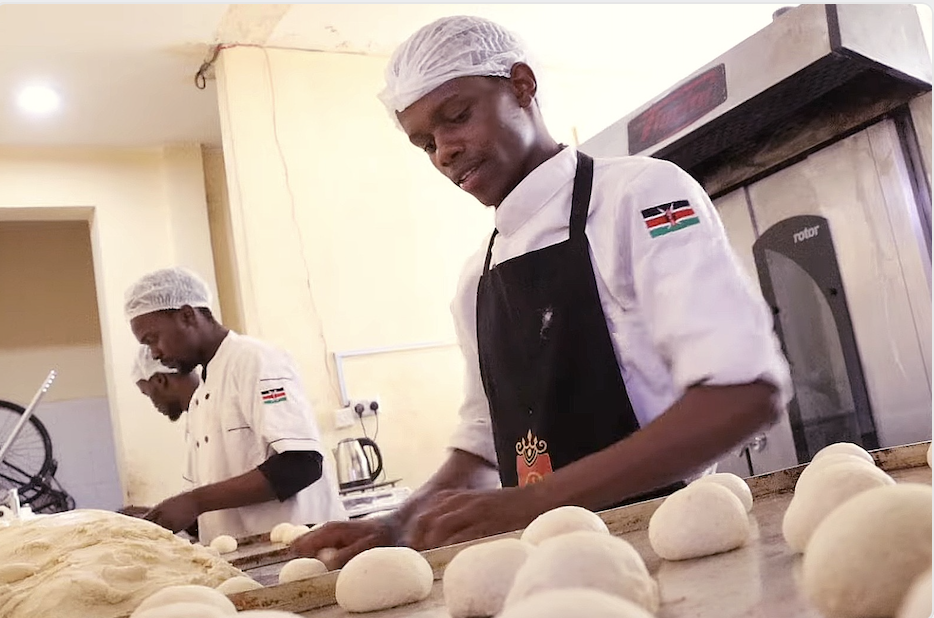
East Africa’s Locust Crisis: Is climate change to blame?
Millions of locusts have descended upon East Africa, making their way across the region with devastating consequences. The invasion of the insect is the worst in recent memory, now affecting seven African countries and posing a serious threat to food security.
Amid the crisis, experts are debating the influence of one factor behind the unusual locust swarms: climate change.
East Africa has been on the front lines of climate change, battling extreme weather conditions from droughts to floods. According to climate experts, the region has experienced abnormally high levels of wet weather in the last eighteen months, including several rare cyclones linked to the rapid warming of the Indian ocean.
Last year, the October-to-December period saw a cumulative rainfall ranging from 120 percent to 400 percent of normal, marking one of the wettest rainy seasons in 40 years.
It is in these wet conditions that the desert locusts at the centre of the current epidemic are known to thrive and according to the World Meteorological Organisation, widespread and heavy rains have contributed to the explosion of locusts in the region.
Connected to this is the Indian Ocean Dipole – an ocean temperature gradient that was recently unusually strong. The effects of the dipole are expected to only get worse as a result of climate change, meaning the current locust crisis may be a harbinger of things to come.
“These seasons create an enabling environment for the locusts to hatch. And when vegetation grows, then the locusts feed on it and you start seeing what we are seeing today. So, climate change is impacting this,” Dr. Richard Munang, Regional Climate Change Coordinator at the United Nations Environment Programme told CGTN.
“The world is heading for a 3.2 degrees Celsius global temperature rise and if emissions are not reduced, these episodes that we are seeing – especially with the outbursts of these locusts – will continue.”
Food security and climate change
Currently, the mass invasion of locusts poses a severe threat to food security and livelihoods in the region.
Each swarm contains up to 40 to 80 million locusts and can consume crops in one day that would provide food for up to 35,000 people.
The severity of this invasion is the worst Kenya has seen in 70 years, while in Ethiopia and Somalia, it’s been 25 years since an outbreak this large, according to FAO.
The invasion poses a daunting prospect to a region where food security of over 13 million people is under threat, according to FAO. The devastating impact of the outbreak is compounded further by other effects of climate change, such as drought and flooding, that has already threatened millions with hunger.
“The implications are huge because if you look at the Horn of Africa region, it has suffered not just from extreme droughts in 2019, last year, but the end of the year was also the floods. So, when you look at these precarious situations, what this locust impact is bringing to the region is already escalating an existing challenge. Especially in terms of food insecurity,” Munang explained.
While climate change is a global phenomenon, Africa is notably vulnerable, primarily due to the low levels of socioeconomic development. People living in poverty lack the resources to quickly recover from the changing impacts of climate change and the devastation caused by locust invasions, droughts, and flooding.
The future for food security on the continent remains precarious, as global emissions increase, and the world continues to warm.
“The reality is, we are at 1.1 degrees and we are already feeling the heat of the changing climate,” Munang notes.
Solutions from the ground
Within this context, Munang argues that the focus should be on countries reducing their emissions, and with 51 African countries signed onto the Paris Climate Agreement, the continent is at the forefront in the fight against climate change.
However, pledges made under the Paris Agreement are still only a third of what is required by 2030 to avoid the worst impacts of climate change, according to UNEP. Faced with a daunting future of continued locust invasions, droughts, and floods, aid organisations are scrambling to keep the locust infestation under control and the FAO is urgently seeking $76 million from donors and other organisations to help fight the outbreak.
While heads are turned towards the actions of governments and the international community, Munang also emphasises the importance of ideas and solutions stemming from the creativity and entrepreneurial spirit of grassroots communities.
One of these solutions is the solar drier, a simple technique used to help farmers dry and preserve their food. “Decentralising these to farmers could mean that they could harvest their crops, store their crops, and even in future years, when we have these outbreaks, they are still able to have food,” Munang explains.
With this approach, he sees the opportunity to increase climate resilience for some of the most vulnerable communities across the continent, while simultaneously boosting socio-economic development.
“The challenge of climate change provides an investment opportunity. We can start moving towards what we call a ‘low carbon pathway,’ where solutions are not adding to emissions but helping to create more opportunities,” he notes.
The key to this approach, he says, is Africa’s youth. “What is important is to inspire the young people. So many young people are unsung heroes. They are engaging in climate action and devising solutions across the continent.”






